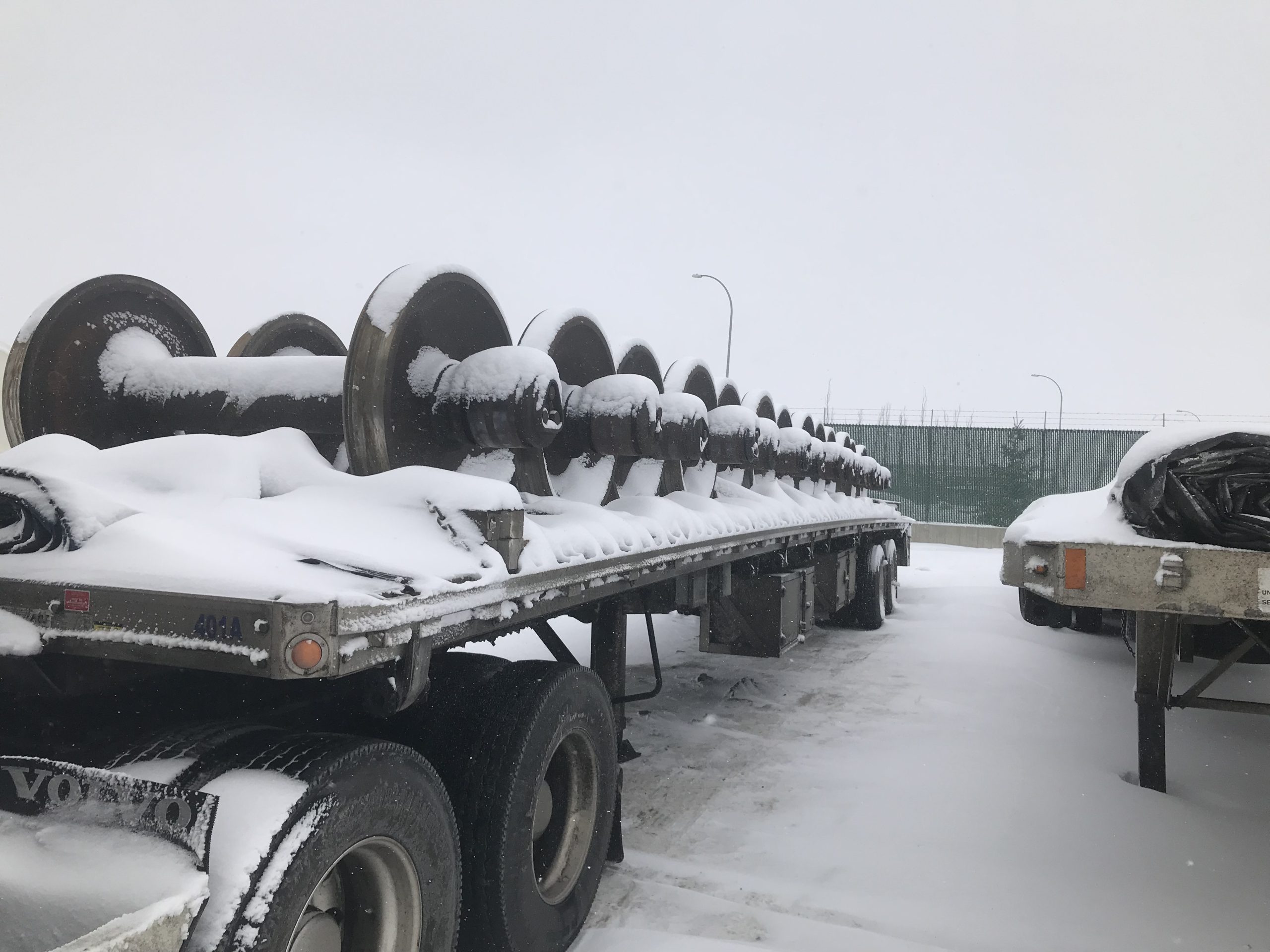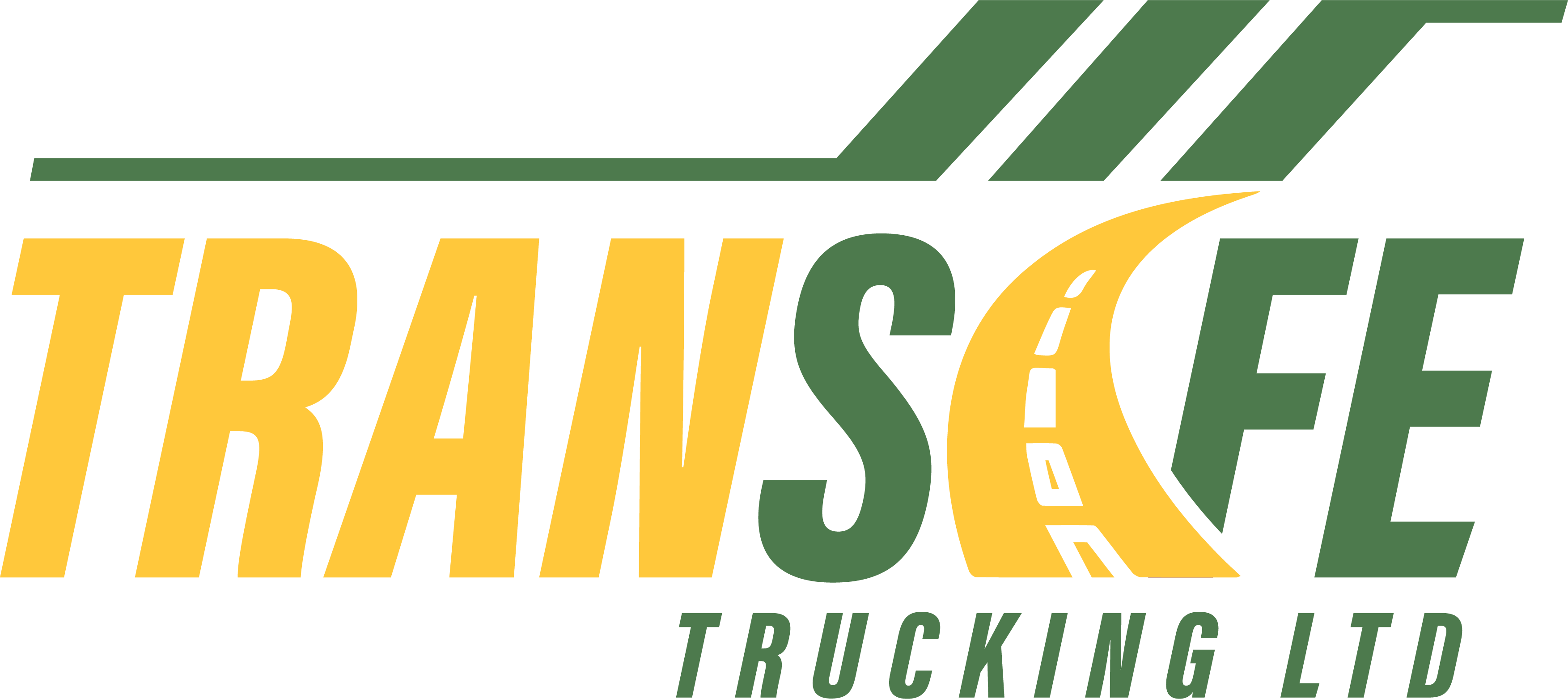- Call on : 587-710-3214
- transafe.trucking@outlook.com
- 1503 37A Avenue NW Edmonton, AB
Machinery Transport
- Home
- Machinery Transport

Machinery Transport
Hotshot trucking has a rich history, tracing its roots back to the mid-20th century when the demand for quick and reliable transportation solutions began to rise. The term “hotshot” itself implies a sense of urgency, a need for immediate action, and this perfectly encapsulates the essence of flatbed trucking in the industry.
Over the years, Hotshot Flatbed Trucking has evolved, keeping pace with advancements in technology, changes in regulations, and the ever-shifting landscape of commerce. What started as a niche service has grown into a vital component of the logistics ecosystem, catering to a diverse range of businesses that require rapid and specialized transportation.
The Hotshot Advantage
Hotshot Flatbed Trucking distinguishes itself with several key advantages that make it a preferred choice for businesses with time-sensitive cargo:
1. Speed and Agility:
Hotshot trucks are smaller and more nimble compared to traditional freight carriers. This allows them to navigate through tight spaces, urban environments, and reach destinations that may be challenging for larger vehicles. The result is faster transit times and increased agility in responding to last-minute requests.
2. Versatility in Cargo Handling:
The flatbed design of hotshot trucks offers versatility in loading and unloading cargo. This makes them suitable for transporting a wide array of goods, from construction materials and machinery to oversized or oddly shaped items. The adaptability of flatbeds is a key factor in the service’s popularity across industries.
3. Cost-Effective for Small Shipments:
Hotshot Flatbed Trucking is often more cost-effective for smaller shipments or when the urgency of delivery outweighs the need for a full truckload. This cost efficiency is particularly advantageous for businesses that require frequent, smaller shipments or those operating on tighter budgets.
4. Accessibility to Remote Areas:
The agility of hotshot trucks extends beyond urban environments. They are well-suited for reaching remote or challenging locations where larger trucks may struggle. This makes them an invaluable asset in industries such as construction, oil and gas, and agriculture, where operations are often in off-road or less accessible areas.
Applications Across Industries
Hotshot Flatbed Trucking has found applications across a spectrum of industries, each benefiting from its unique advantages:
1. Construction and Building Materials:
In the construction industry, where timing is critical, hotshot trucks excel in delivering materials to job sites precisely when needed. Whether it’s steel beams, lumber, or heavy machinery, the speed and versatility of hotshot flatbeds contribute to the seamless flow of construction projects.
2. Oil and Gas:
The oil and gas industry operates in dynamic and ever-changing environments. Hotshot Flatbed Trucking proves invaluable for transporting equipment, tools, and materials to remote drilling sites, ensuring that operations continue without unnecessary delays.
3. Agriculture:
In agriculture, where seasons and weather patterns dictate the pace of work, hotshot trucks play a crucial role in transporting equipment, fertilizers, and harvested crops. Their ability to access farms in rural areas makes them indispensable for the agricultural supply chain.
4. Manufacturing and Industrial Equipment:
Manufacturers rely on hotshot flatbeds to transport heavy machinery, oversized components, and raw materials. The adaptability of flatbeds accommodates the diverse needs of the manufacturing sector, supporting the seamless flow of production processes.
Challenges and Solutions
While Hotshot Flatbed Trucking offers numerous advantages, it is not without its challenges. The industry faces issues such as fluctuating fuel costs, regulatory changes, and the need for skilled drivers. However, innovative solutions and advancements are addressing these challenges.
1. Technology Integration:
The integration of advanced technologies, such as GPS tracking, telematics, and route optimization software, has significantly enhanced the efficiency of hotshot trucking. Real-time tracking allows for better visibility into shipments, optimizing routes, and improving overall logistics management.
2. Driver Training and Recruitment:
Addressing the shortage of skilled drivers is a priority in the hotshot trucking industry. Companies are investing in comprehensive training programs and adopting recruitment strategies to attract and retain qualified drivers. This focus on the human aspect of the industry ensures a steady supply of capable professionals.
3. Environmental Considerations:
As with any sector in transportation, environmental sustainability is a growing concern. Hotshot trucking companies are exploring options such as fuel-efficient vehicles, alternative fuels, and route optimization to minimize their environmental impact while maintaining efficiency.
Regulatory Landscape
Navigating the regulatory landscape is an inherent challenge for the transportation industry, and hotshot trucking is no exception. Compliance with safety regulations, weight restrictions, and licensing requirements is crucial to ensuring the smooth operation of hotshot services.
Government agencies, recognizing the importance of this sector, are working to streamline regulations and provide clearer guidelines for hotshot operators. This collaborative effort aims to strike a balance between ensuring safety on the roads and supporting the efficiency of hotshot trucking operations.
Future Trends and Innovations
The future of Hotshot Flatbed Trucking holds exciting possibilities with ongoing innovations that are set to further elevate the industry:
1. Electric and Sustainable Technologies:
The adoption of electric and sustainable technologies is gaining traction in the transportation sector. While electric trucks are still in the early stages of development for heavy-duty applications, the potential for a more sustainable hotshot trucking fleet is on the horizon.
2. Autonomous Vehicles:
The exploration of autonomous or semi-autonomous vehicles is a notable trend in the trucking industry. While full autonomy is still in the testing phase, the integration of autonomous features, such as lane-keeping assistance and adaptive cruise control, could enhance the safety and efficiency of hotshot trucking in the future.
3. Blockchain for Logistics:
Blockchain technology is making waves in logistics and supply chain management. Its potential to enhance transparency, traceability, and security in transactions could revolutionize the way hotshot trucking companies manage their operations and collaborate with clients and partners.


